
 5 min read
5 min readHow to Find the Best Article Ideas with Competitive SEO Analysis
The oft-repeated phrase “content is king” holds true for practically any business that isn’t a household name. If your company wants to attract an audience from organic search and social media traffic, you should build content that is interesting and relevant to that audience.
In addition to getting traffic from people who look specifically for your company, content marketing allows you to gain access to customers who want to learn about a topic adjacent to your business. With enough high-quality content, your website will rank highly even for search terms that aren’t directly about your business—so long as you have a piece of content that answers a potential customer’s question.
While the benefits of content marketing are clear, companies often struggle to find article topics that attract the perfect niche audience. A piece of content should be general enough to be useful to a wide range of people, but it should also be specific enough to avoid being drowned out by content from more established players.
Without a strong knowledge of your competitors’ content and how well it’s performing, your choice of content ideas will be practically a shot in the dark. Instead of guessing that a particular article idea will perform well based on your intuition, you should look at how existing real-world examples have performed for other companies.
In this article, you’ll learn how you can discover the perfect content ideas with powerful technology from Seodity.
Who Are Your Competitors?
To begin a data-driven approach to discovering good content ideas, determine who your competitors are. Start compiling a list of every website that you think might take organic search engine traffic away from your own domain. Here are a few suggestions to make that process easier:
- Search Google or another search engine for a vague description of your company, not its name. This way, you’ll get a long list of potential competitors in a similar market segment.
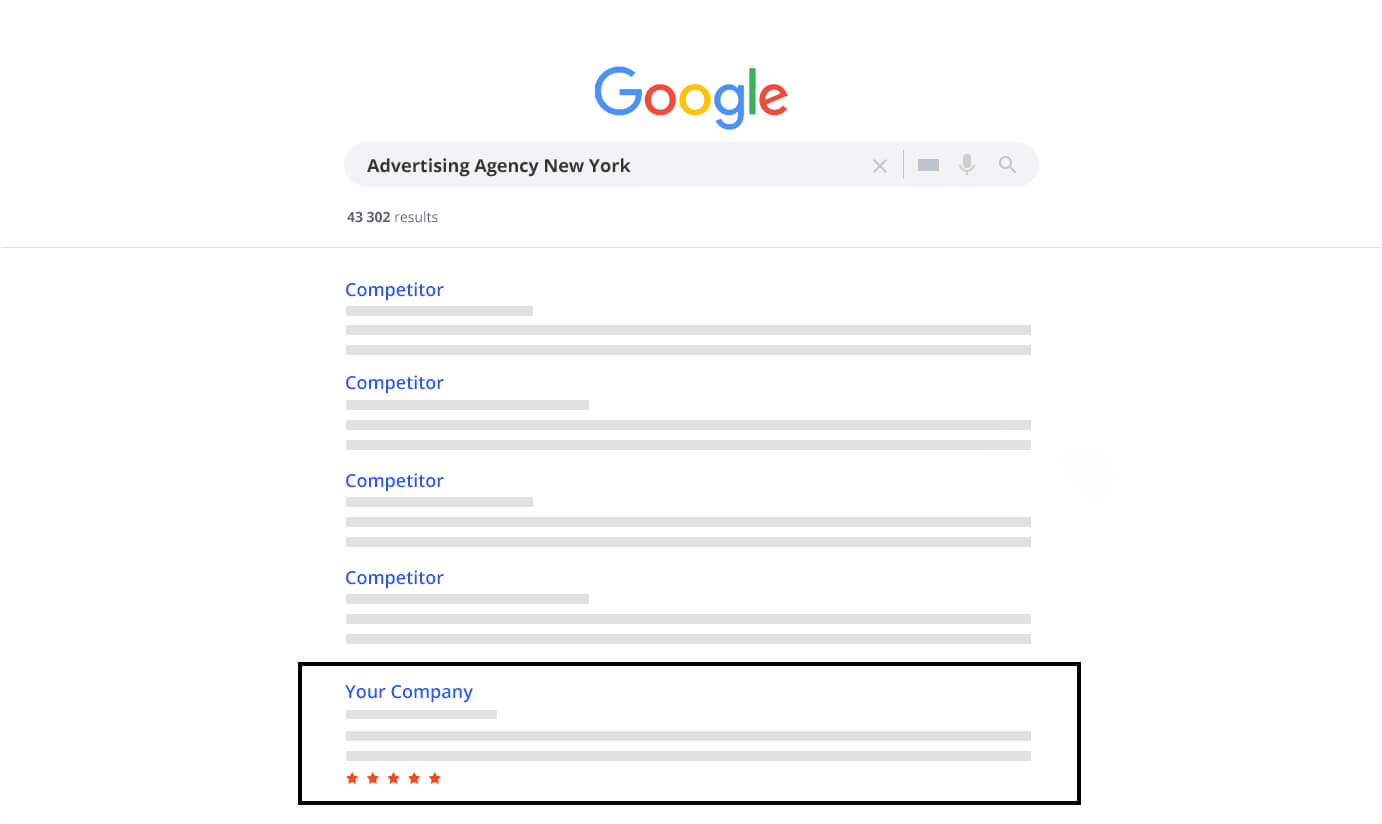
- Look for web pages that answer questions that you can envision your own customers asking. If you type something written like “how to build a website” into Google, you’ll get piles and piles of content marketing articles from your competitors.
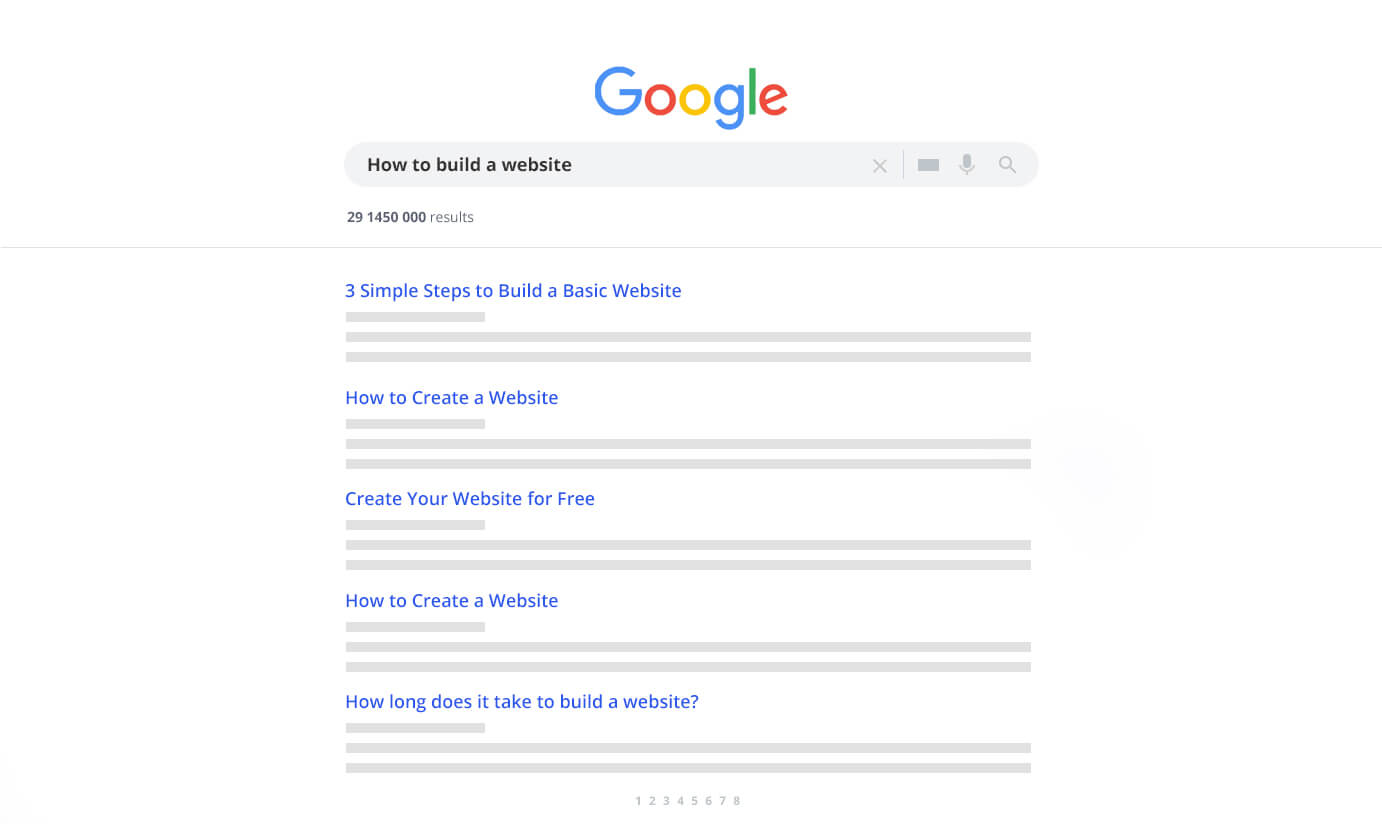
- Browse social media, Internet forums, chatrooms, and other online spaces for posts and advertisements that might compete with your business.

Once you have ten or fifteen of your top competitors written down, you’ll be ready to continue to the next step.
Find Competitors’ Content With Seodity
If you’ve used Seodity in the past, whether it was for an on-site technical SEO audit or another purpose, you likely already have an account. If you’re brand-new to the platform, welcome! You can sign up for free; here’s how:
- Visit Seodity’s website at https://seodity.com and click “Get SEODITY free” to make your trial account.
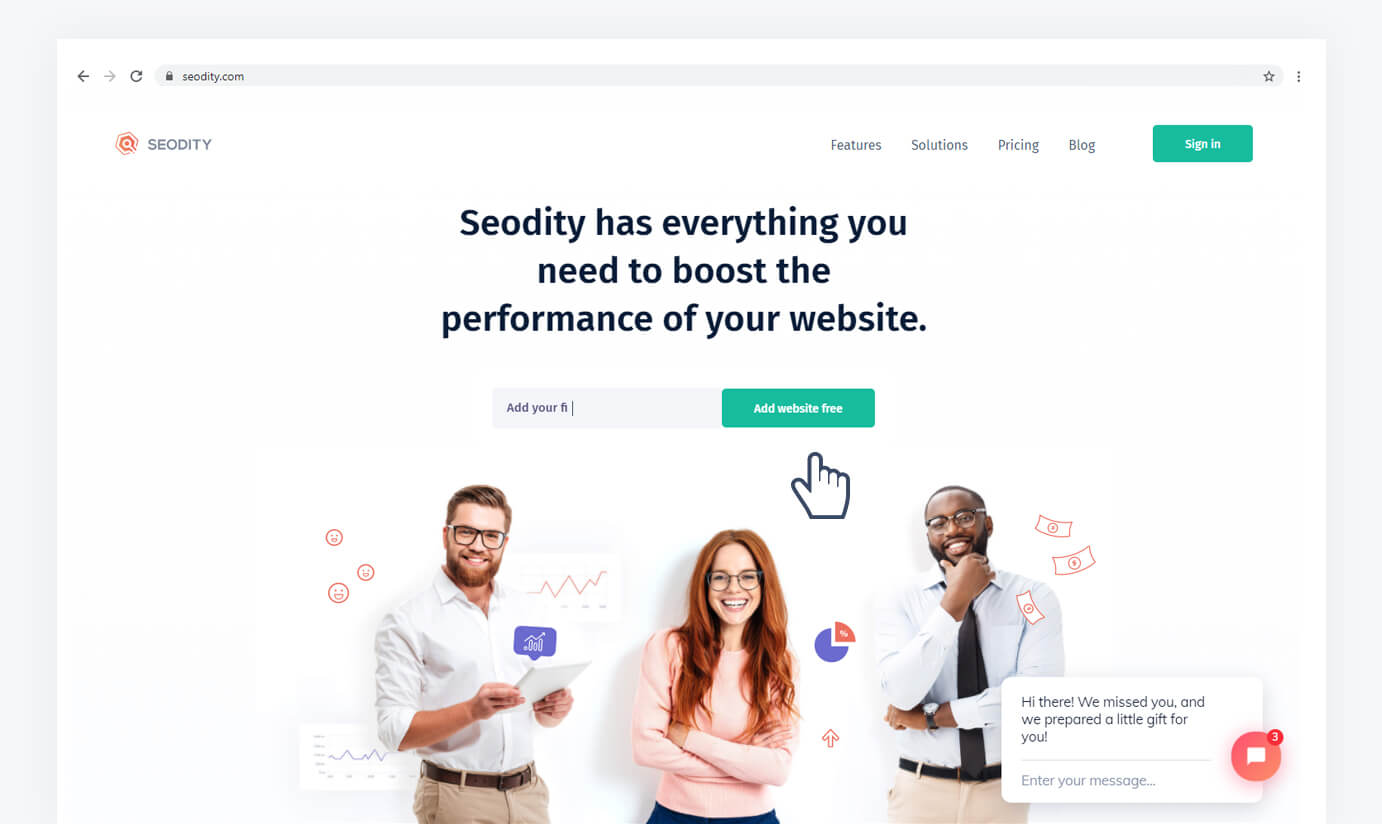
2. Provide the URL of your website and a few keywords that you try to optimize for. These might be keywords that your customers already use to reach your website or they might be keywords that you would like to rank well on.
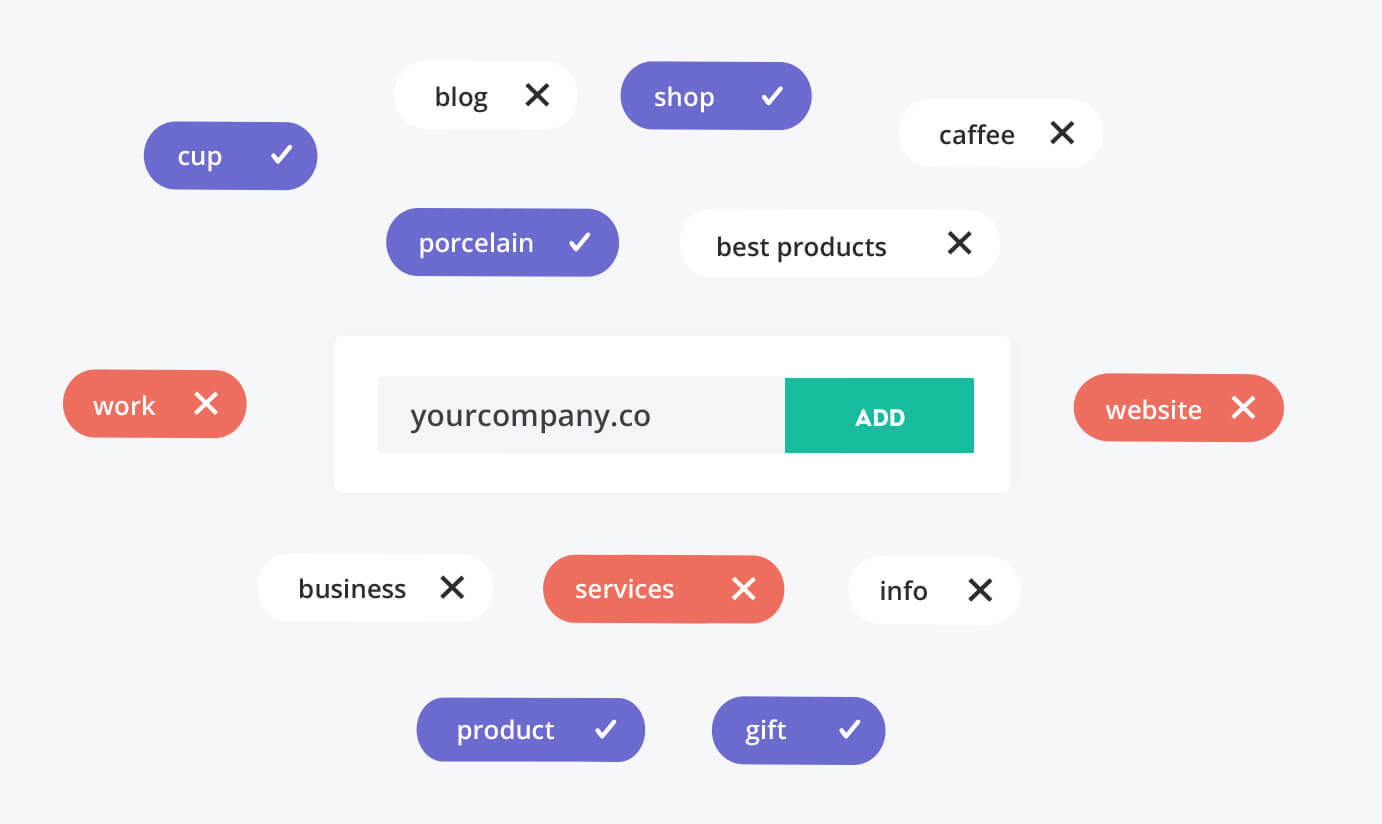
3. Wait a bit for Seodity to prepare its report. In addition to competitive analysis functionality, Seodity helps you correct on-site SEO errors—you’ll see lots of suggestions for technical SEO improvements as soon as your report loads.

Now that you’ve signed up with Seodity and it has finished analyzing your website for on-site content, proceed to analyze your competitors:
- In the topmost tab bar, select Content Explorer. This tab houses everything your company needs to analyze external content and find ideas that suit your business needs.
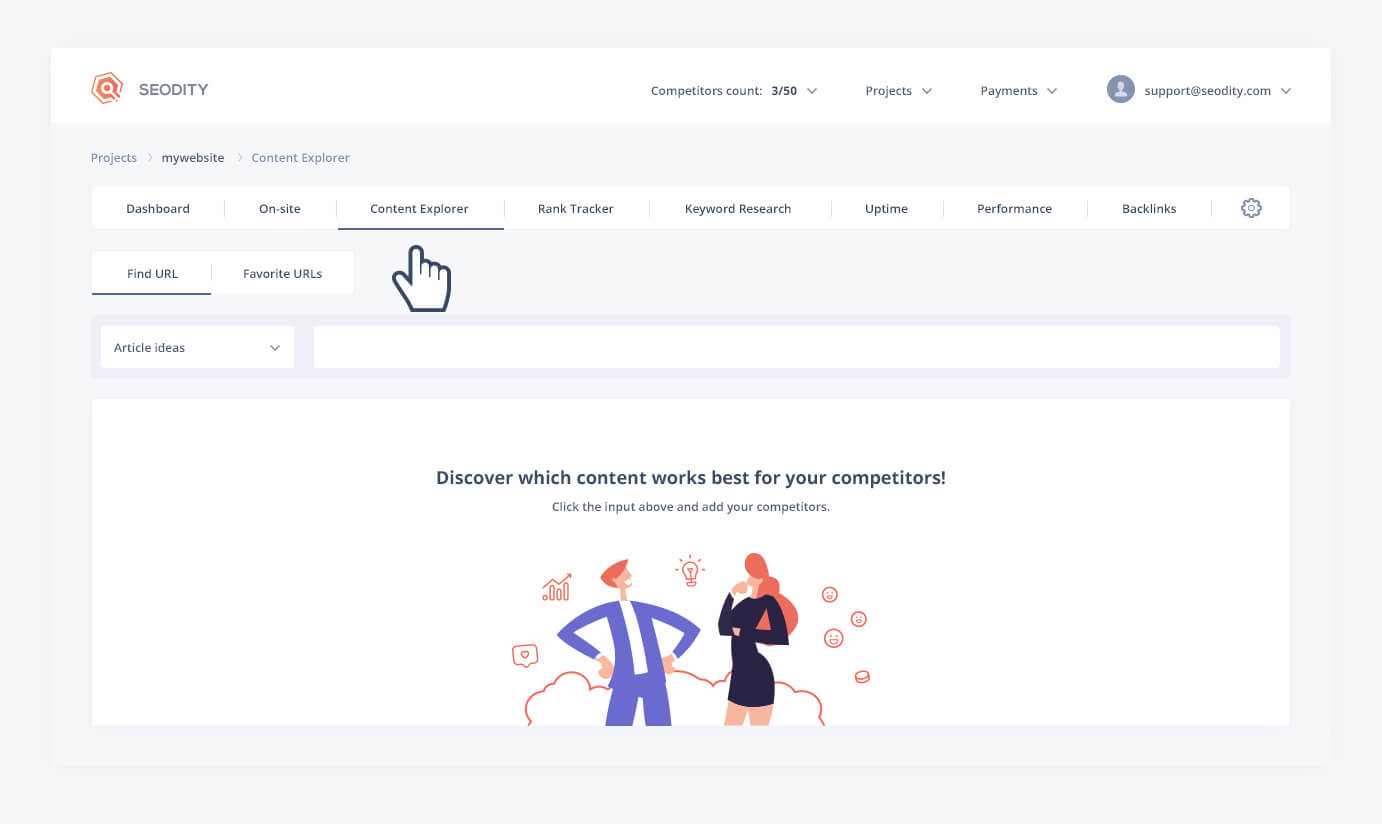
2. Make sure that the tab bar below is on Find URLs, not Favorite URLs.
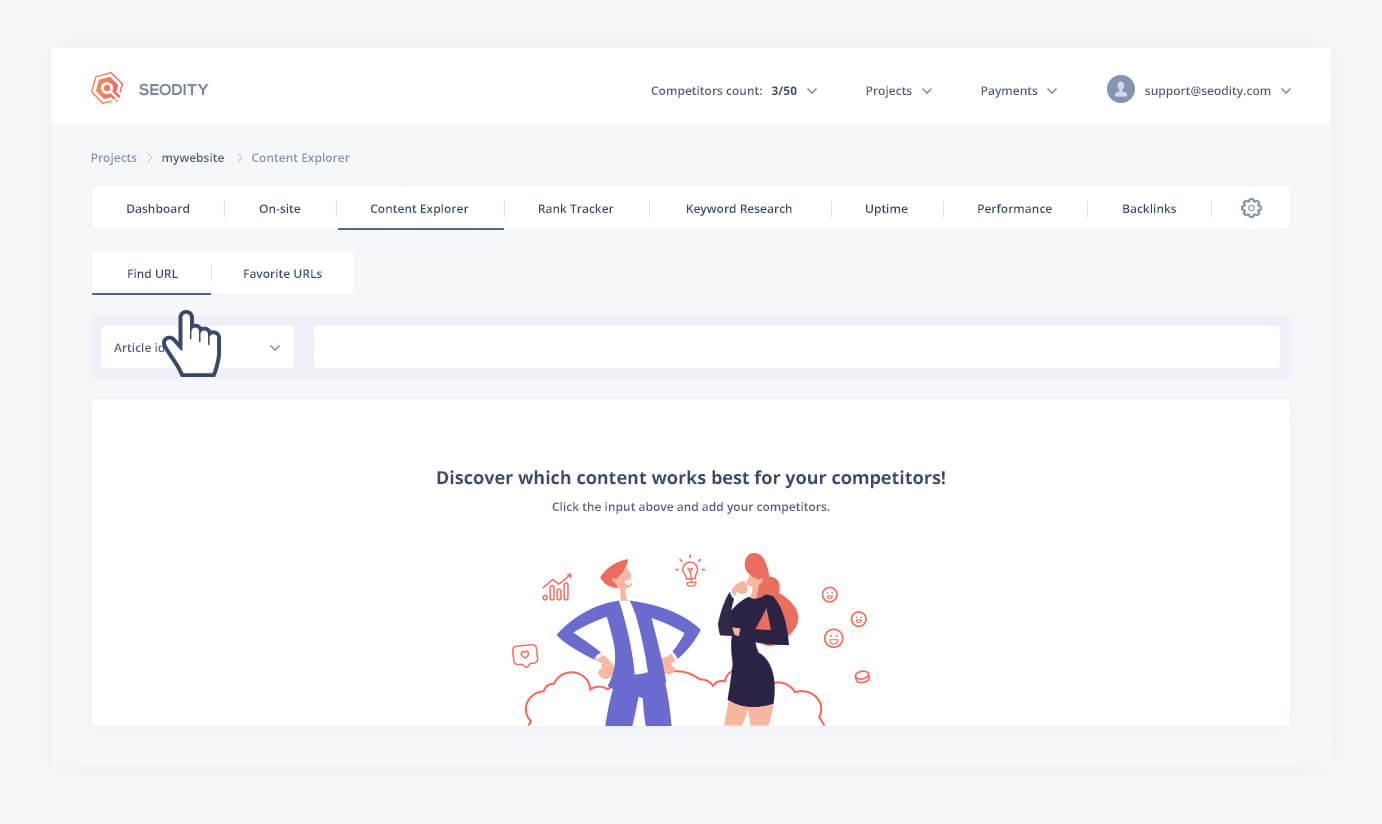
3. Choose Article Ideas from the dropdown menu and enter a list of your competitors’ websites in the text box to the right.
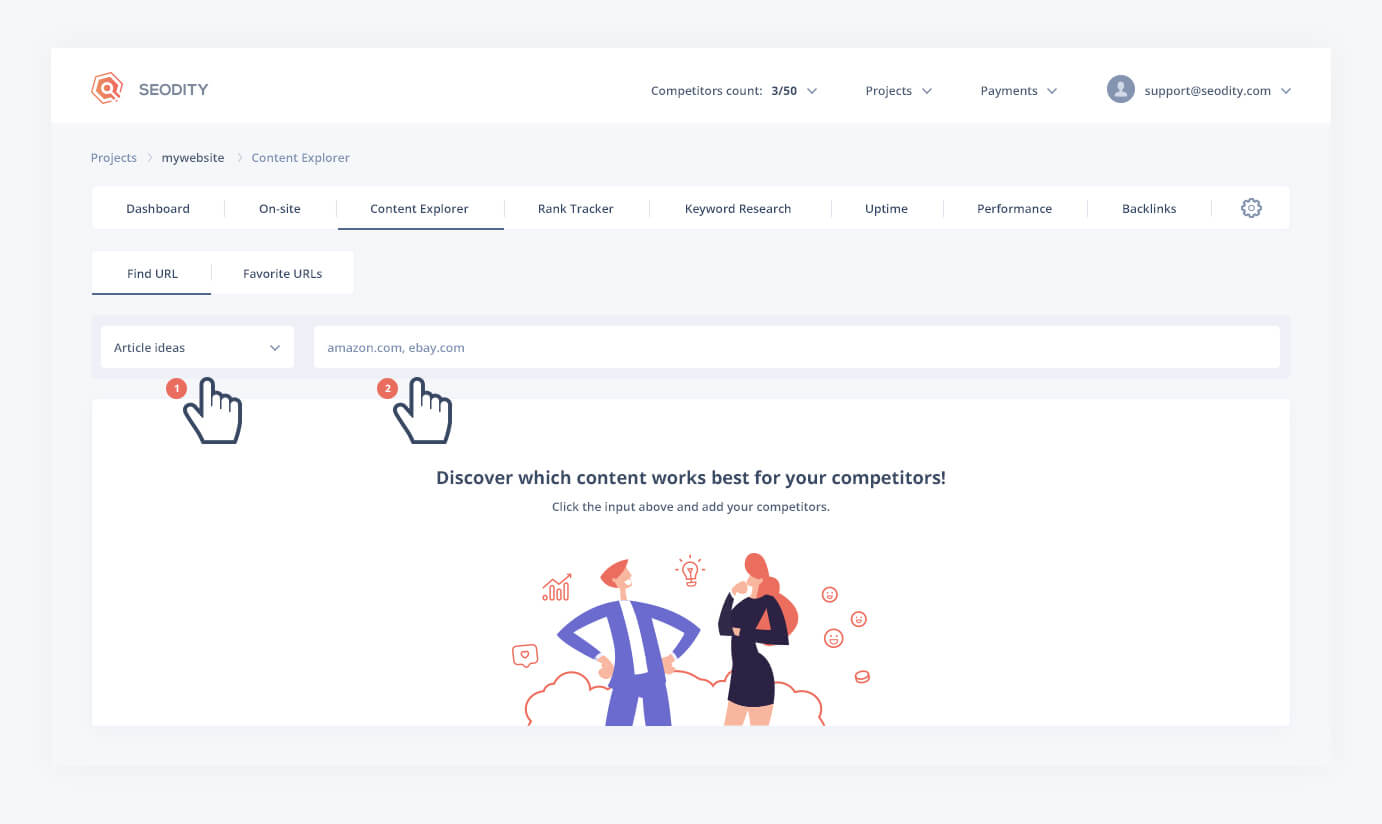
After a minute or two, Seodity will come back with a sortable list of the most popular pages from your competitors. You can sort these results on three different values: Count (number of search engine results pages where the link appears), ETV (estimated traffic volume), and Impressions ETV (an adjusted ETV figure that takes into account impressions volume and click-through rate).
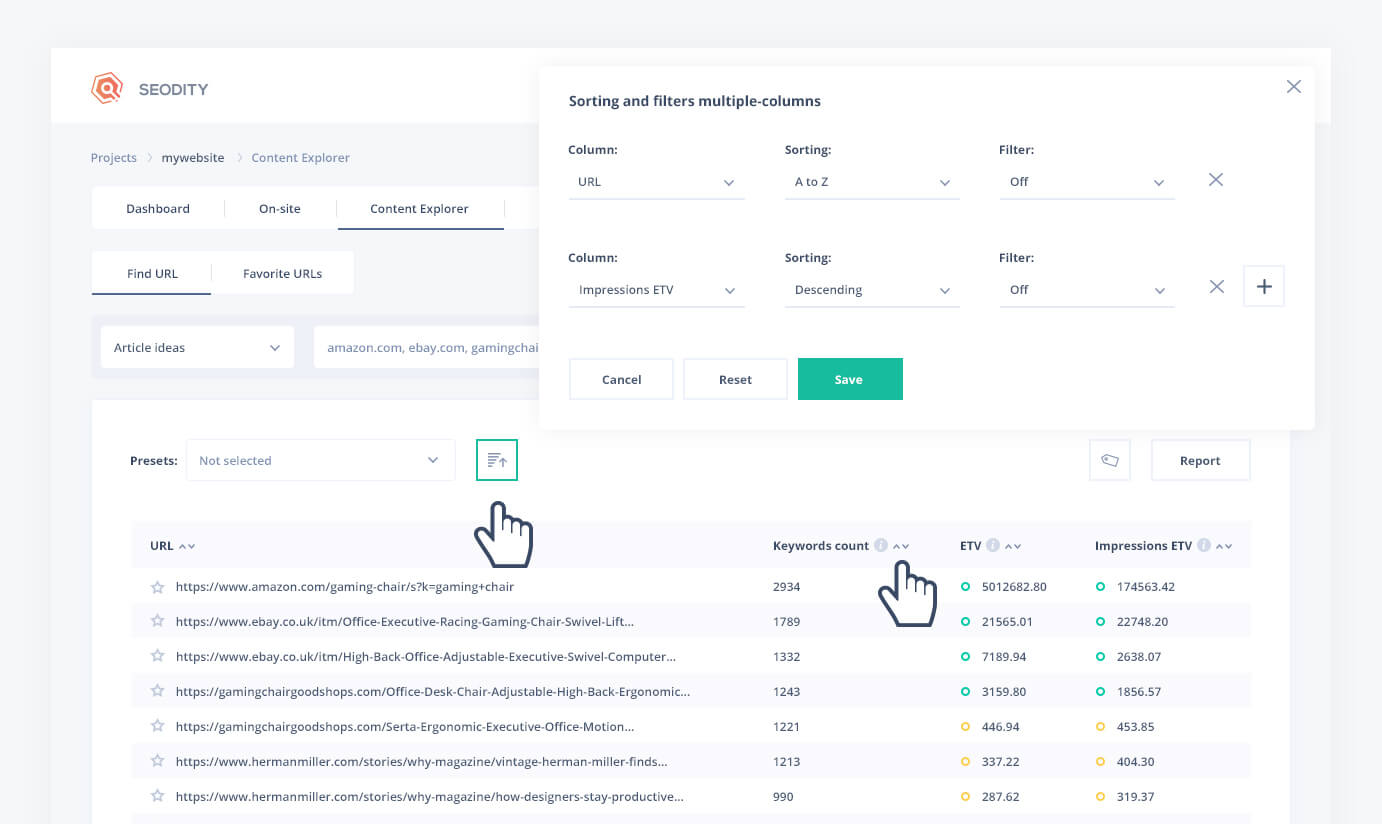
In addition to sorting your results by numerical values, you can filter URLs to include keywords that you’re interested in writing about. For example, if your company creates website-building software and you’d like to market a new e-commerce feature, you can filter your competitors’ content with “e-commerce” in the URL to find the most relevant content for comparison.
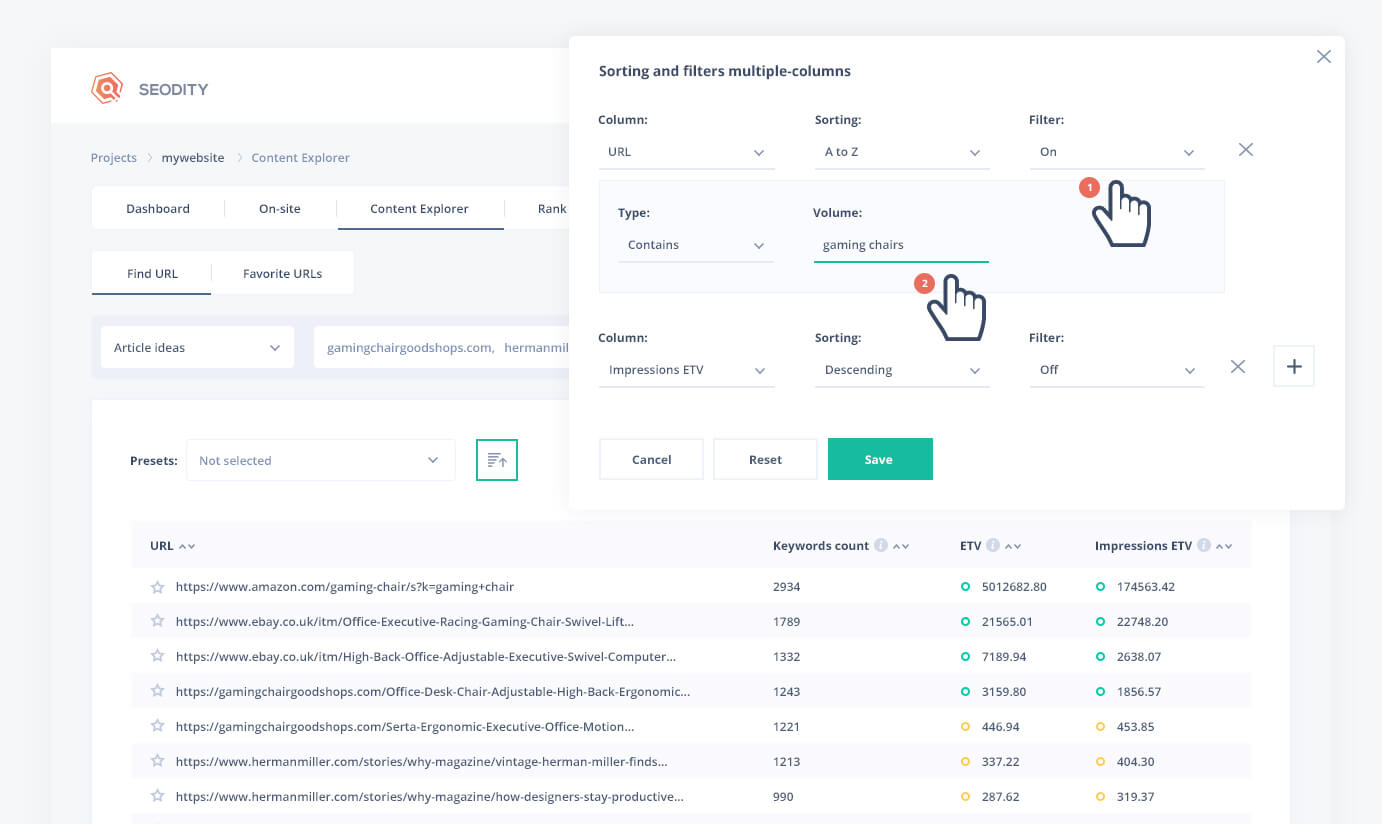
Compare Other Companies’ Content to Your Own and Find New Ideas
Using the information that Seodity’s competitive analysis software provides, you can find article ideas that strike the perfect balance between being specific enough to attract a niche audience and receiving enough organic traffic to make the investment worthwhile. Use the star icon on the left side of each result to mark individual options as favorites.
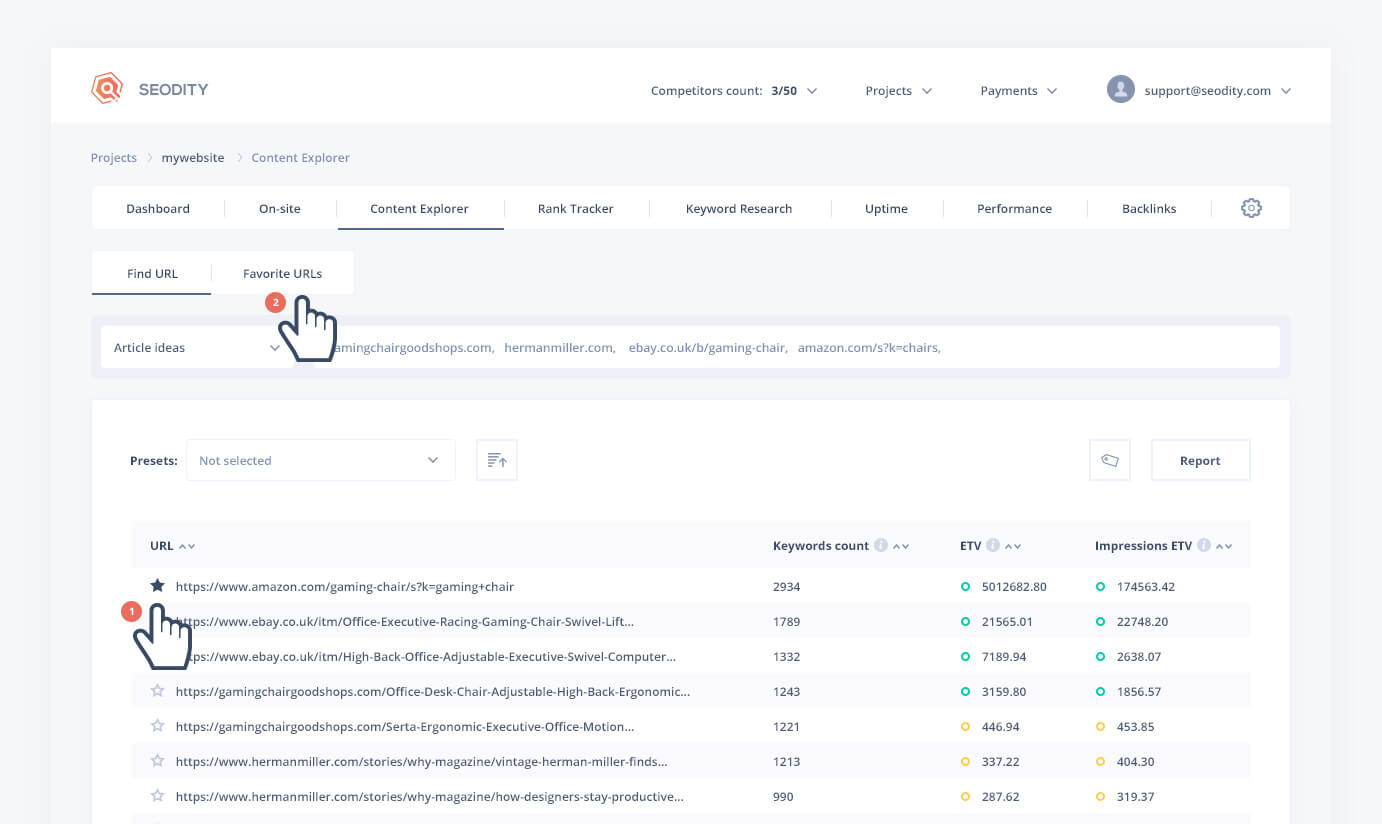
While manual approaches often work, they’re pretty much just guesswork. Instead, you’re better off using a data-driven approach like with Seodity’s competitive analysis features.
The Bottom Line
Building just the right content to attract traffic for your business is a never-ending process. Good SEO—including content that draws in a wide audience, even those not originally interested in your product—can be a fundamental part of inbound marketing.
Even though nearly every business with a significant online footprint understands just how useful content marketing can be to gain customers, they frequently have trouble coming up with the right content ideas.
Since great content marketing involves ranking better than your competitors for certain keywords in search engines, understanding your competitors is just as important as understanding your audience.
To effectively discover content ideas that can do well against your competitors’ articles and blog posts, use a data-driven approach with information from Seodity’s competitive analysis feature. Find competitors whose content you like and view estimated statistics that reveal just how much traffic volume these competitors receive. Using this information, you can make informed decisions and build your business.
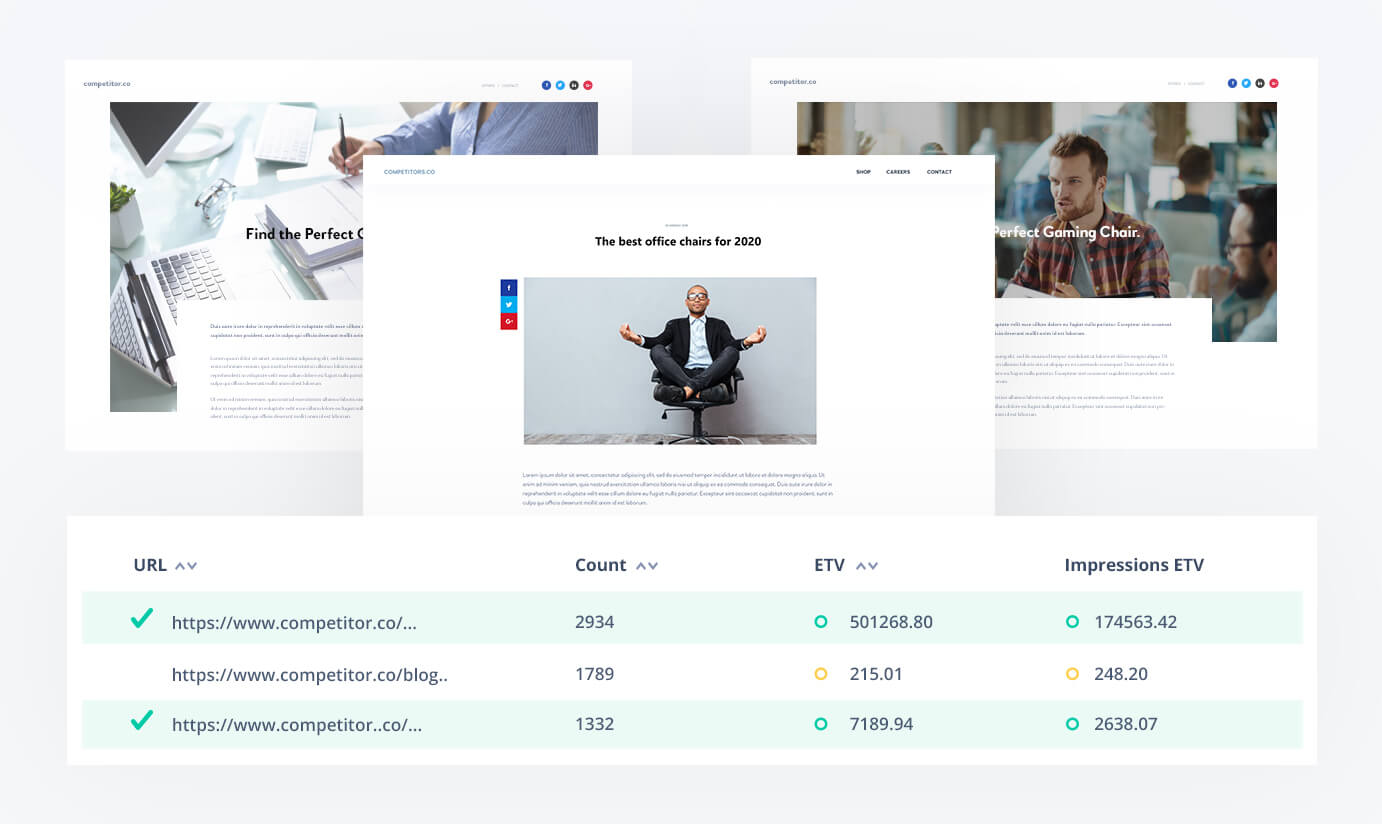

Marcin is co-founder of Seodity
.svg)


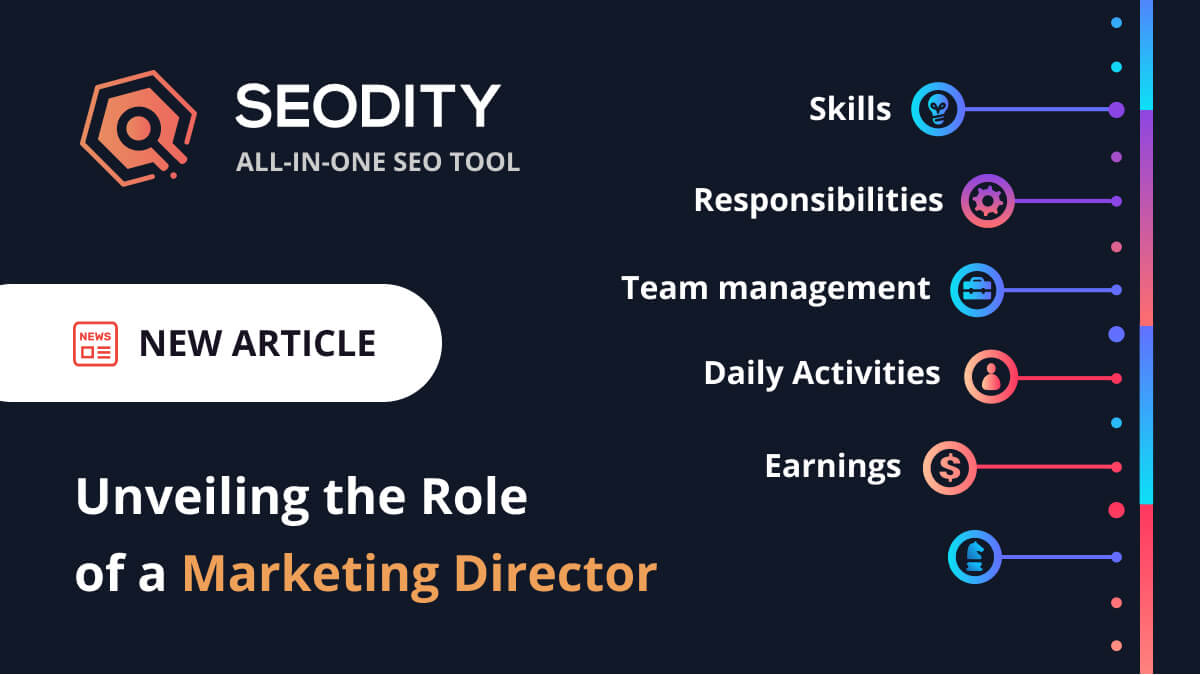
![What Is Content Marketing In Simple Words? [Examples & Tips]](https://storage.googleapis.com/seodity/public/blog/images/9091cf01d817431085a1f42498bab910.jpg)



